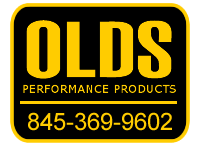The mis-conception about camshafts and what they can and can’t do. I am sure all of you have heard this time and time again that a camshaft can alter where the power band comes in on an engine. As much as we would like to believe this, it is not necessarily the truth. There are some key factors in where the power range will come in. Those key factors really have to do with the size of the engine (cubic inch), the static compression, piston speed and the volume from the intake valve seat area all the way back up to the venturi of the carburetor. Piston speed is understood from rod ratio and engine rpm. Manipulating these areas will have a significant greater impact as to where the power comes in and how broad it will be, than the camshaft profile itself. The camshaft serves many different functions and each and every function that it provides must accent those areas discussed above. The first area of discussion is cylinder pressure. The intake lobe profile will dictate exactly when and where that intake valve opens and exactly when and where that intake valve will close. All of this being done while the crankshaft is in motion, operating that piston up and down the bore, which allows air and fuel to enter. The closure of that intake valve will trap that same air and fuel to be compressed. I can’t express how critical it is to have those events correct, and the lobe separation (LSA, lobe separation angle), in conjunction with the camshafts duration and the intake lobes centerline install will dictate the cylinder pressure of your engine. The wrong choice and you will have excessive cylinder pressures or weak cylinder pressure. Excessive pressure will do damage resulting in excessive force onto the wrist pin, bearings and crankshaft. Excessive cylinder pressures lead to detonation. Lack of cylinder pressure will leave the engine with a rich condition from the inability to shear the fuel as it enters the manifold. The carburetors idle circuit will suffer as well due to the weak signal from poor air speed. I like to look at camshafts as the mechanism that operates the timing events on the front and back door. The object is to get those events correct. We just spoke about our front door operation and now it’s onto the back door and how long we should hold it open. The best way that I can express to my customers how a camshaft operates, when exhausting what has been burned, is to give an example such as a business establishment. Let’s say we are operating a business, whereas we have a line up at our front door and our establishment holds occupancy of 500. It is important to have minimum of the same size exit door at the least, and that exit doors events will be our exhaust, and how far off we set our exhaust durations apart from our intake durations. The more efficient our back door is, the more customers we can get in that front door. The exhaust lobe profile in my estimation is just as important, if not more important than the intake profile. By creating the perfect exhaust profile we can get rid of 100 percent of the burned and unburned combustion. This allows for the combustion chamber and area above the piston, to be left with a vacuum. The inability to get rid of that exhaust will create reversion. Reversion is the passage of air/fuel reversing and going in the wrong direction. With the correct exhaust profile you can create exhaust speed, and that exhaust speed will allow for a complete scavenge of the engines contaminants. The complete scavenge will leave a vacuum, and that vacuum will allow for the charge to be taken in from the intake side, even without the movement of the piston. Think of that exhaust and its speed, as drafting of which is used frequently in nascar. If you pull your vehicle up close enough to another vehicle while at great speed, that vehicle behind will be effortlessly moving with little to no restriction. A vortex or vacuum In other words. We are using the exhaust speed to help assist that intake charge. We call this Inertia ramming. The key to camshaft design is to understand the pump and the functions of that pump and to match the camshaft events accordingly. If you need assistance with a camshaft design that would suit your engines application correctly, please feel free to email or call. Thank you
